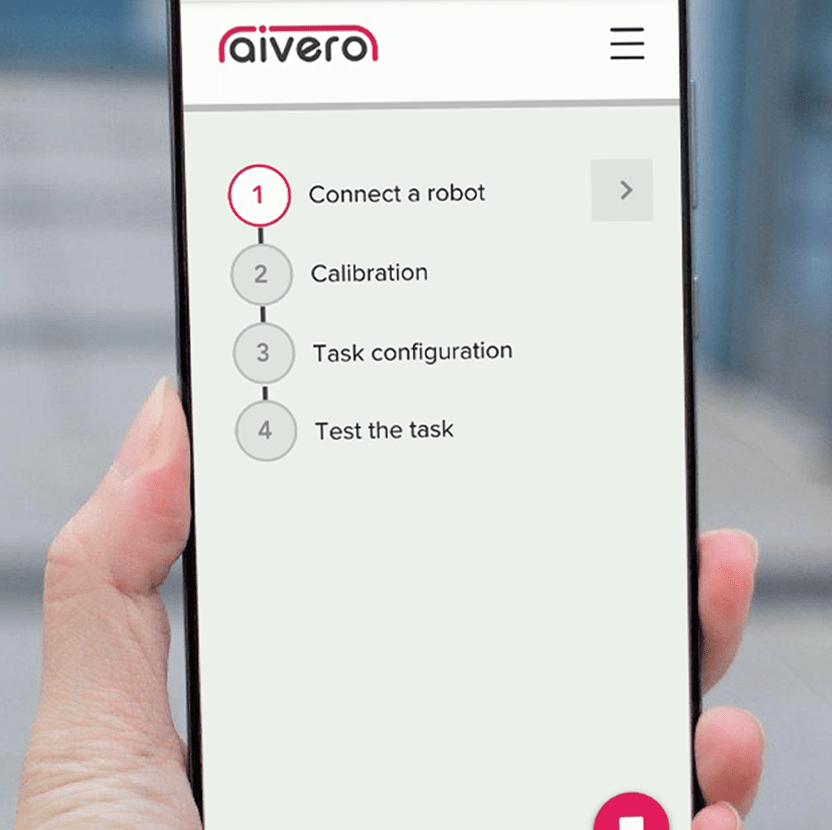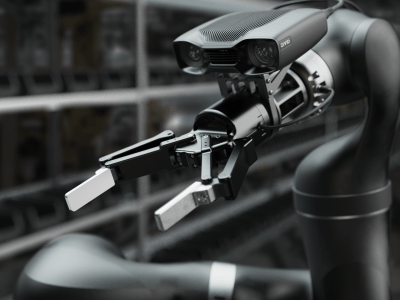How software-based robotics makes automation affordable
The effects of technological change are hard to predict, if not impossible, but there are similarities when looking at the advancements in robotics compared to the evolution of video conferencing. Once constrained by hardware, video conferencing eventually became a mainstream way of communication through softwarization. Instead of being dependent on hardware compatibility, the dominating communication systems used today are based on software protocols. If this wasn’t the case, everyone would have to bring microphones and video cameras back to their home office only to find they needed support in setting it all up.
This is the current state of robotics, and in this blog post you’ll learn how Aivero enables a software-based approach to robot control making it accessible, affordable and easy to use by simply clicking a link.
Want to watch a video instead?
The Current State of Robotics
Every year new reports show that robots are becoming cheaper and easier to operate, thus finding their way into new use cases and industries. Developments in key technologies such as end-of-arm-tooling, machine vision and machine learning make robots more flexible in use and open for new possibilities.
The true cost of robotics
In 2020 there were 2.7 million industrial robots operating in factories around the world, this number equals 126 robots per 10,000 employees. Still, robots aren’t really available to the majority of businesses due to the complexity of deployment processes which increase the cost significantly. For instance, the Association for Advancing Automation reports that customers can expect to multiply a robot’s price tag by 3x to find the total costs. Among these are major cost drivers associated with installation and engineering hours during deployment.
Usually, robots are programmed to do specific tasks under predictable circumstances making them unadaptable to changing environments. In extent, this requires programming skills due to the current human-machine interface. Meaning that if conditions change, specialized competency is required to make them compatible with new tasks.

Moving Towards Intelligent Robots
A key to making robots cheaper is to make them smarter, i.e. less dependent on human specialization so that the user interface can become more intuitive for anyone to control. To do so they need to learn from each other like humans do, they need an efficient way of transferring their experiences and knowledge. Giving robots this ability to connect and draw on learnings is an important step to make them more adaptable.
Much like video conferencing connected people globally and gave a deeper contextual understanding of the counterpart, the same can be done for robots.
How Softwarization Changed Video Conferencing
The conceptual idea of video conferencing was introduced by Bell Labs back in the 1870’s and has developed to become an essential part of our modern lives. Video conferencing changed the way we communicate, enabled the sharing of information and connected people globally. Nowadays, video conferencing is best known as a software-based solution such as Zoom and Teams, where people share a virtual space by the click of a link, but this wasn’t always the case.
From past to present time, video conferencing has evolved from being dependent on large and expensive hardware taking up entire rooms to becoming agnostic with any device such as smartphones and laptops. While today’s solutions are widely available compared to earlier versions, it is software-based systems like Zoom and Teams that dominate the mainstream market. Unlike these, hardware-based systems require continuous maintenance and support, they lack portability and need updates every 2-3 years. When comparing the two, software-based systems can communicate independently of hardware devices, thus, it is flexible and scalable given by available licenses compared to investing in new hardware.
Simplifying robotics by using video data
Much like today’s robotics market, video conferencing, at one point, wasn’t available to the majority, it became practical for regular use by combining data compression and high-speed internet connections. Before, users had to move to conferencing booths to communicate. This approach required investments in hardware in addition to specialized competency to set it up ready for use. On the other hand, software-based systems allow for communication independent of hardware and competency, thus it becomes a cheaper and easier way of communication.
Through exploiting data robots become smarter and easier to operate, because they have a better understanding of their environment!
Transmitting video data might be taken for granted these days, but it is through transmitting such data that humans can communicate at a higher level and gain a deeper understanding of each other. It’s through a fully functioning visual system that one can perceive color, distance, depth, motion and form which are all contributors to understanding context, a determining factor when interacting with the environment. This is why applying visual perception to robots will give them the ability to become better decision makers.
Robotics Made Easy: The Software-Based Approach
Much like humans have eyes, robots are dependent on 3D cameras to acquire information about their surroundings. In addition, they need a brain to process the information to make sense of it. In the case of Aivero’s solution this is done through a cloud-based service where data is stored on remote servers providing the necessary computing power at scale. When combining volumetric data generated by the cameras with deep learning, datasets can be trained and stored as a knowledge base for robots to draw on. This way, robots can learn from each other’s past experiences when completing tasks such as piece-picking and inspection which reduces the need for engineers to redeploy them everytime the environment or objects changes.
By making robots smarter, the overall cost of automation can be reduced significantly
In the software-based approach, controlling robots is moved away from code and hardware-based protocols, instead humans can connect with them from any device. By shifting the interface from requiring specialized competency towards intuitive ways of controlling them the deployment process becomes easy and fast. In fact, the process can be done from any device, meaning anyone that carries a smartphone can be a robot operator. This is what Aivero calls Smooth Automation.

The benefits of software-based robotics
In essence, robotics is about increasing ROI—in a broad sense—through automation, so that more time can be spent on bettering decision making and achieving optimal resource utilization. This is what Aivero’s solution is all about, giving robots the ability to understand their environment through 3D perception and to share this knowledge with each other, making them more intelligent. This way, they can be deployed by anyone, no prerequisites needed.
Much like our understanding of the world, Aivero connects robots to the cloud giving them a shared knowledge base to be utilized across units and locations by the click of a link. By making robots smarter the integration process becomes more of an intuitive way of interacting with them, rather than communicating through complex codes and programming.
Read more about Aivero’s solution and how robotics-as-a-service can automate your processes in a simple and affordable way!
https://youtu.be/TrnBF5KzSEI



